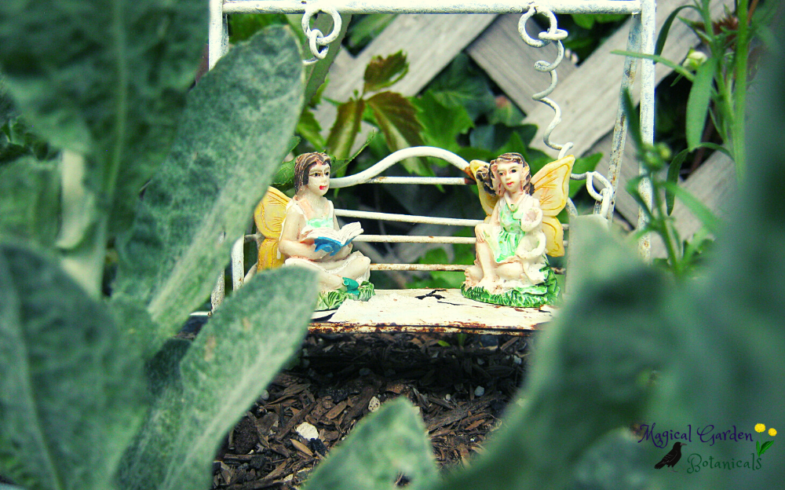Stories from the Magical Garden in Summer
The ample rain we received during the winter and spring this year made for an abundant garden. This bounty welcomed a few new plants and encouraged some of the established plants to reach new heights. Offerings of healing, wisdom, and whimsy were shared throughout the season. I invite you to relax a few moments and prepare yourself some nourishing herbal tea. And then join me as I share some stories from the Magical Garden in summer.

Honey bee visiting a kale flower, marshmallow plant (Althaea officinalis), a garden path, Echinacea/lavender/plantain, borage flower (Borago officinalis), plantain (Plantago major) and chamomile flower.
Magical Garden visitors

Clockwise: honey bee, Painted lady butterfly, honey bee, Swallowtail butterfly, ladybug larvae.
Resilience through faith
The sunflowers in the Magical Garden reseeded themselves from last year. They chose where they wanted to grow. Because of this, I had to relocate quite a few to make space for other plants.
We had a long winter season that turned into a rainy and sometimes chilly spring. The sunflowers paid no mind to the fluctuating weather and continued to thrive.
Once they bloomed, I felt they had a message to share. My first visit with these towering flowers (most of them over 7 feet tall!) resulted in a few giggles and them referring to me as “shorty.” I can appreciate that; I don’t recall ever being called that in my adult life.
My second visit resulted in some wisdom I would like to share. They spoke in unison as they whispered-
“Resilience through faith.”
When the weather felt more like winter and less like spring, they continued to grow. They maintained faith in the knowledge that warmer days would soon arrive.
During the gusty and unrelenting winds, they held fast. They huddled together, providing one another support and remembering that their roots were well in place.
On days where it was cloudy, they still followed the path of the sun. Although they couldn’t see the sun, they knew it was still there.
After these lovely plants reached full bloom, they developed their nourishing seeds. The birds that visit the Magical Garden let me know it was time to harvest the seeds. I gathered roughly half of the flowerheads to save the seeds for snacking and cultivating. The rest was left for the birds to enjoy and redistribute the seeds.
Although the sunflowers have reached the end of their season, they are still standing tall. When the wind rustles through their drying leaves, they sing a soulful melody that echoes hope and resilience.
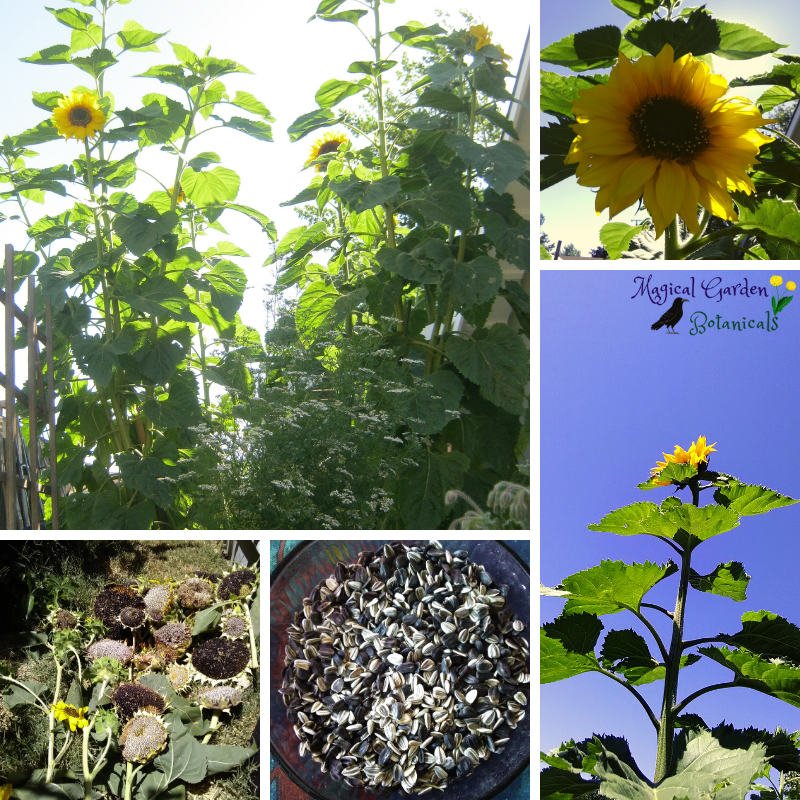
Sunflowers, (Helianthus annuus), belong to the Asteraceae family and they offer more than just tasty seeds. The flower petals are edible and can also be used as a dye. The leaves are astringent, diuretic, and expectorant. A poultice made with the leaves can be used on insect and snake bites. As a tea, the leaves help to reduce fever. Sunflowers have been used to extract radioactive uranium and other heavy metals from the soil. And after you empty the flower head of its seeds, it can be used as a kitchen scrubbing pad.
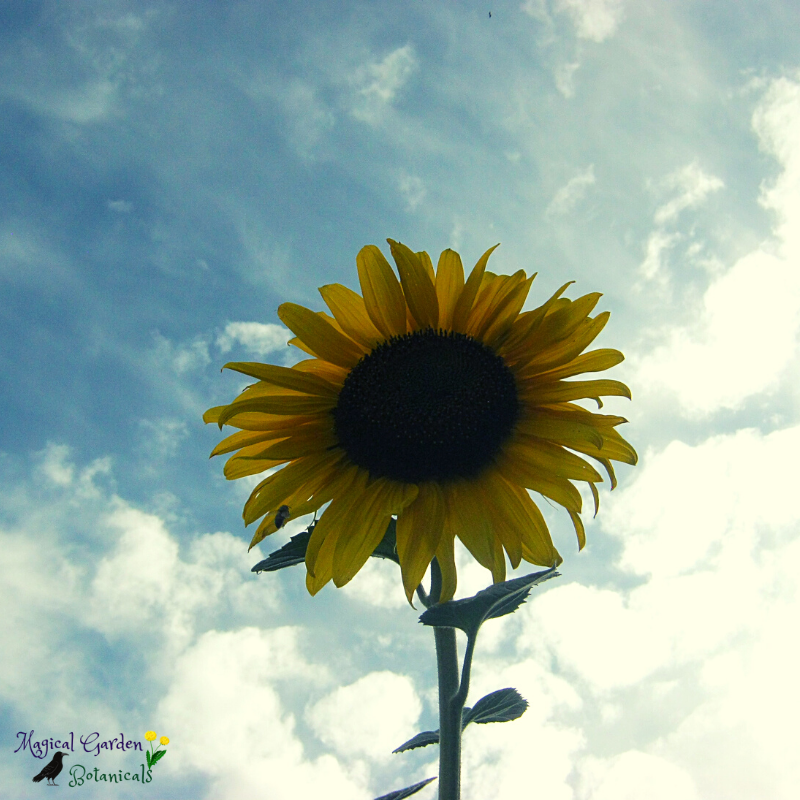
Supported by love
This enchanting hollyhock is Mary. She is the tallest hollyhock in the Magical Garden. She towers over everything, except the poplar trees, at about 14 feet!
Her humble message is quite beautiful.
She says she grew with the support of her sisters. While she relished and blossomed in this support, she continued on her path while stretching to reach the sky.
“Your path is unique, just like you.”
It was the support that encouraged her growth, but it was her determination to follow her path that took her to new heights that others only imagined. Some may think that the drive for such growth was competition, but this was not the case here. Instead, it was the process of focusing on oneself that sustained such incredible growth.
I want to add that at the time of this writing, the Autumnal Equinox, Mary bloomed once more. I thought she had completed her growing cycle, yet she surprised me once again with a lovely flower. At this point, I have no way of measuring her height. All I can say is that she continues to inspire me.
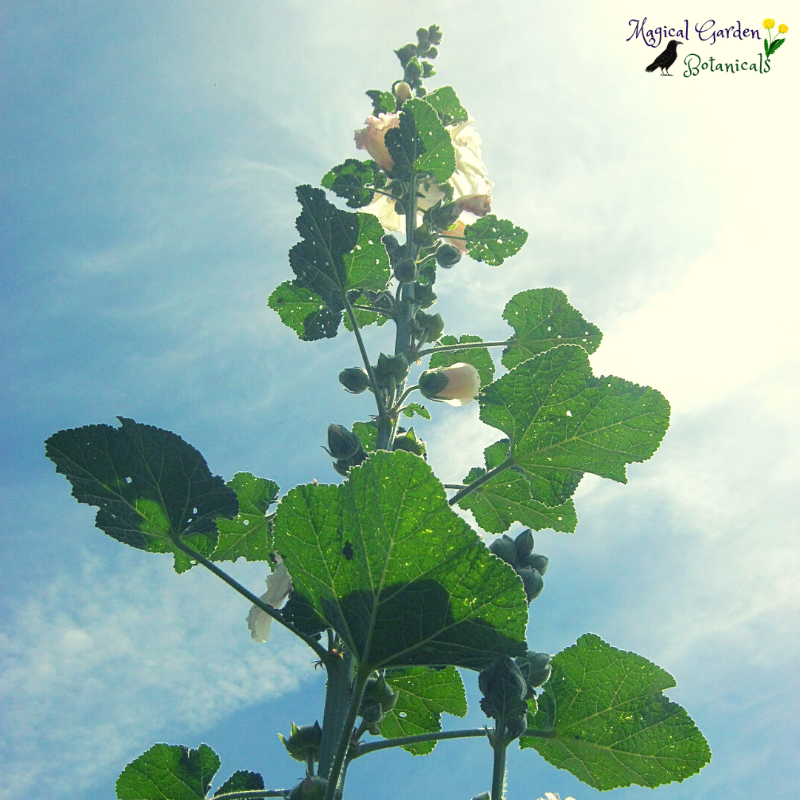
In addition to their beauty, Hollyhocks (Alcea rosea) offer medicinal value as well. The flowers, seeds, leaves, and roots are edible. They are part of the Mallow Family, and their beneficial properties include anti-inflammatory, astringent, demulcent, diuretic, emollient, and febrifuge. The flowers can be harvested when they are open and dried for later use.
An infusion using the dried flowers can help to soothe: sore throats, coughs, mouth irritation, and the digestive tract, as well. Since heat can destroy the medicinal properties of some flower petals, use a cold infusion. A cold infusion is made by soaking the flowers in cold water for about 8 hours. Strain the liquid and add sweetener, if desired.
Tender young leaves and flowers can be eaten raw. They are also a beautiful edible garnish.
Make a poultice with the leaves to calm the skin from rashes and inflammation. Lightly steam them before application.
As an infusion, add to bath water to soften skin or use as a hair rinse to moisturize hair.

Hidden treasures
Chickweed (Stellaria media) This little plant carries an exciting story. For a couple of years now, I had been searching for it locally and haven’t had success. I decided to purchase some seeds this past winter to plant in the Magical Garden. To my dismay, the seeds never sprouted. I figured it just wasn’t meant to grow here.
Little did I know.
One day I was in an area I rarely visit in my backyard. Someone had placed my garden shovel against the fence in the corner. As I reached for it, I looked down and guess what? Yes, it was the precious little plant I had been searching for- right in my yard!
So what did I do? I carefully dug up her roots and placed her in the pot that I had designated for the seeds that hadn’t sprouted. She thrived in her new location. And can you believe this? About a week later the sleepy seeds decided to grow as well.
“Sometimes what we seek is already in our presence.”
Chickweed is known for many topical applications; however, I made a tincture with the first harvest. For internal use, chickweed may help with inflammatory conditions. Minerals found in chickweed include iron, copper, magnesium, and calcium. It is also high in vitamins A and C. This is a tasty little plant, and it makes a great addition to salads.
For topical applications, it is best known as an all-around soother and is great for bites, stings, burns, bruises, splinters, skin inflammation, sunburn, and itchy skin.
On another occasion, I witnessed some lemon balm (Melissa officinalis) and chickweed (Stellaria media) having a little chat. (See the bottom left photo in the chickweed image below) Lemon balm says, “I soothe the soul,” and chickweed says, “I soothe the skin.”
And yet these peaceful and humble neighbors are so much more as they equally offer a powerhouse of healing for both external and internal applications.
Every time I walk by the chickweed plant, she joyfully calls to me. With her sweet tiny flowers and lovely foliage, her vibrant radiance is difficult to ignore. I look forward to connecting more with this fantastic little healer.
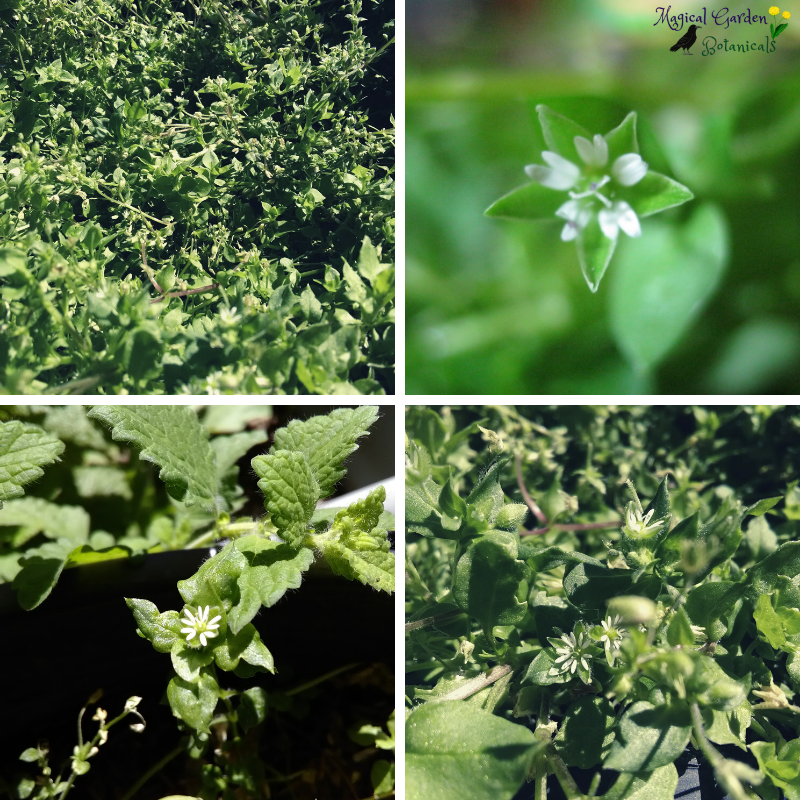
Exuberant decorators
I’m pretty much convinced that the morning glories are the garden extroverts. Or perhaps they possess an ability to know where a splash of color is needed or even where a bit of support would be beneficial. It’s no surprise to see them thriving in places where I have not placed seeds, which is something I rarely do anyway. Morning glories are the most prolific plant in the garden, although I still save a handful of their seeds every autumn.
I spotted this vivacious purple morning glory climbing up a sunflower stalk. The flowerhead had been removed, so the morning glory decided to take its place and bloom where the sunflower had once shined.
“There is always beauty to be found if we set the intention to bloom and thrive.”
While the Virginia creeper (Parthenocissus quinquefolia) vine offers colorful foliage and berries during late summer and autumn, it remains rather monochromatic during the summer months. So once again, the morning glory thought it fitting to step in and brighten up the scene.
I’m always grateful for the whimsy and ingenuity the morning glories demonstrate as they bravely stretch out and share their remarkable beauty.
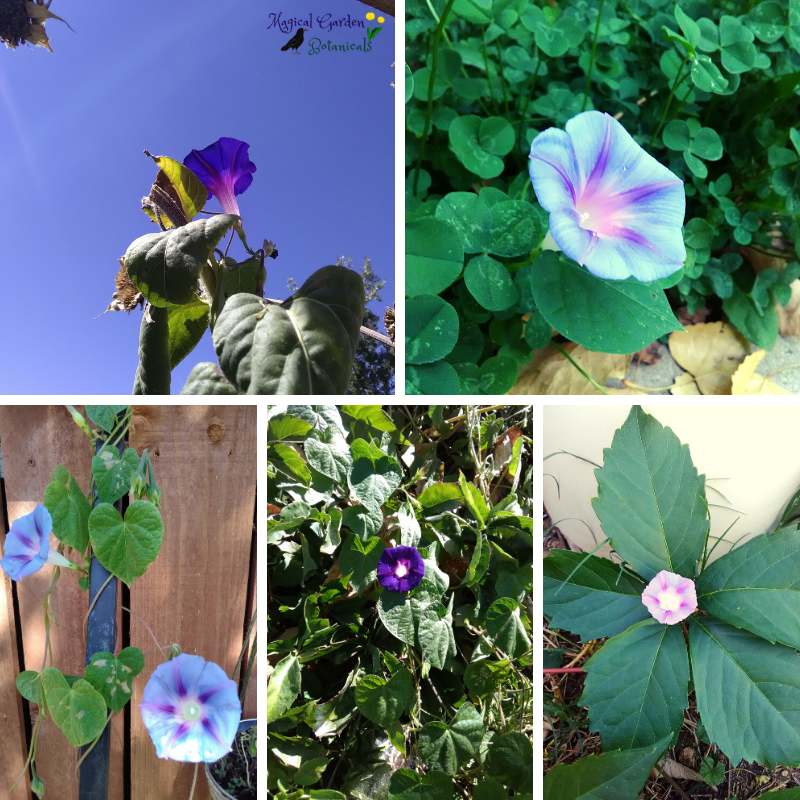
The seasons shift
As the summer plants respond to the changing seasons, I find myself reflecting upon the messages that were shared. I had been occupied with tending the plants and the rewards of their abundance for most of the summer that I am feeling a bit melancholic about the upcoming shift. As cooler nights become more common, I know it is time to harvest the last bits of the still blooming plants. But I am grateful as my apothecary is well stocked with the blessings of this abundance. I look forward to the cooler weather that calls for me to look inward. It will also be a time for processing all the tinctures that were lovingly prepared during the summer harvests, time to craft new remedies and to make plans for the coming spring. Suddenly, the melancholic cloud dissipates like a gust of wind blows a pile of leaves on a windy day. And what is revealed is the fertile soil that holds the promises of the seeds that will sprout when their time arises.
Wishing you a season of bountiful harvests and magical blessings.
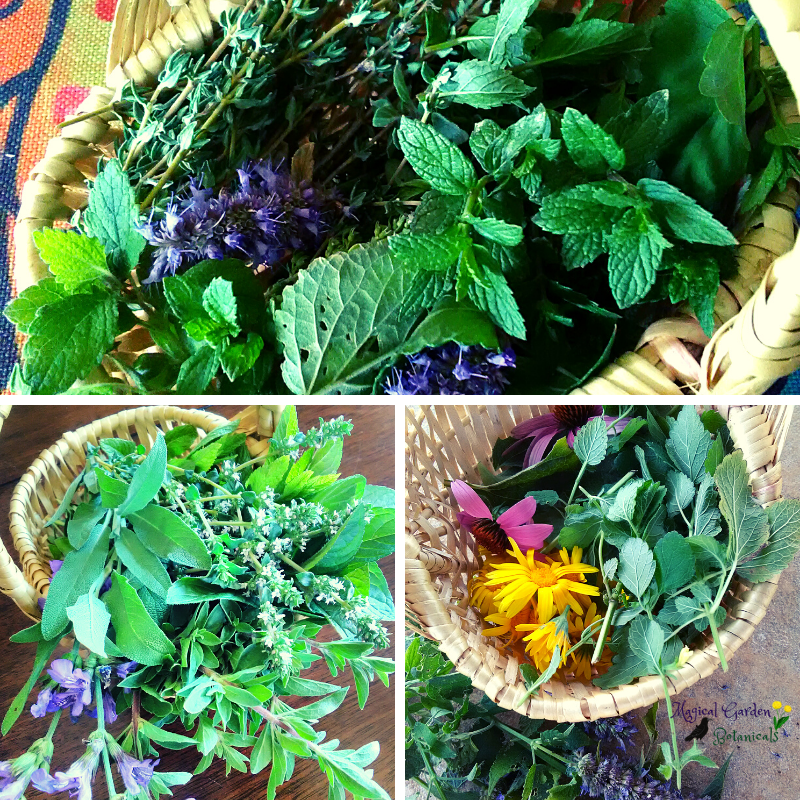
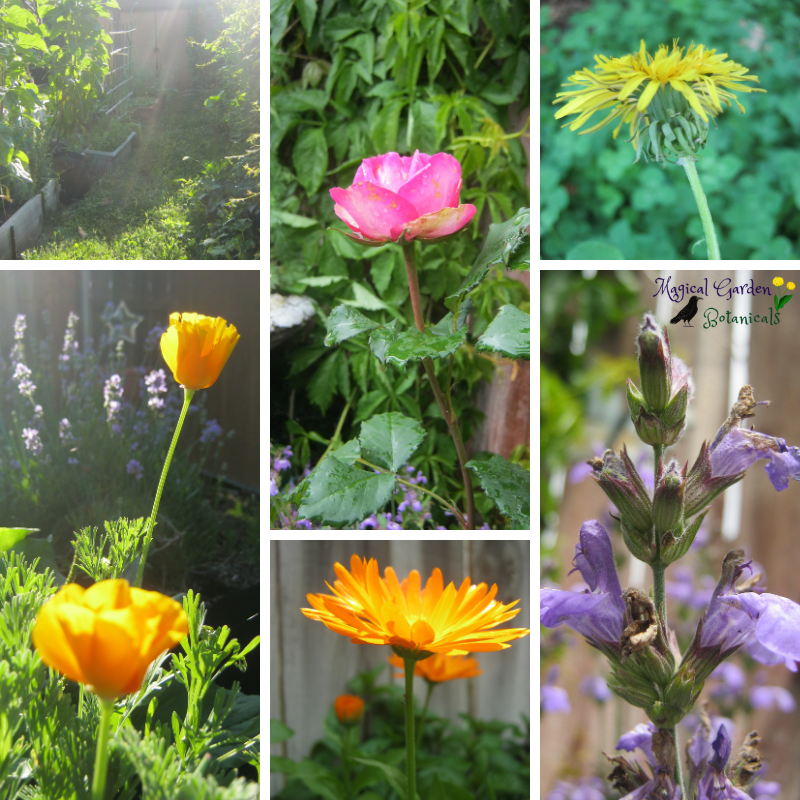
Clockwise: a garden path, pink rose, dandelion, sage flowers, calendula, California poppy/lavender.
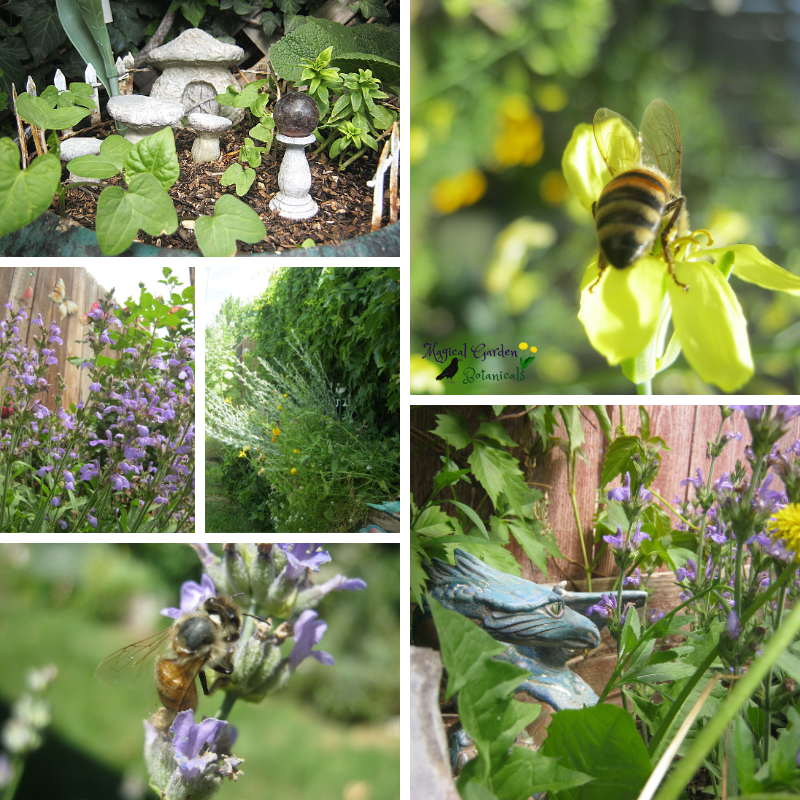
Clockwise: Faerie garden, honey bee/kale flower, the blue dragon, honey bee/lavender, a garden path, and sage flowers.

Daughter of the Earth, Mother of her creations. Ivanna (Evie) doesn’t care for titles, but the ones that fit best are homeschool mom, herbalist, and blogger. Her greatest joy is guiding others to find true wellness within themselves and Mother Earth. When not spending time with her beloved family, she can be found researching everything related to holistic wellness, crafting herbal remedies, or visiting with the plants in the Magical Garden.

